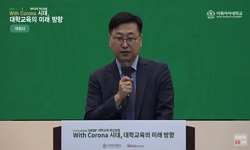최근 대학의 교육과정 질 개선을 위한 움직임이 분주하다. 대학은 교과목 및 교육과정 인증제를 도입하고 인증을 위한 평가항목을 개발 및 활용 중이다. 더불어 이러한 인증 과정을 통해 지...
http://chineseinput.net/에서 pinyin(병음)방식으로 중국어를 변환할 수 있습니다.
변환된 중국어를 복사하여 사용하시면 됩니다.
- 中文 을 입력하시려면 zhongwen을 입력하시고 space를누르시면됩니다.
- 北京 을 입력하시려면 beijing을 입력하시고 space를 누르시면 됩니다.

대학교육 질 관리 모형 개발: CQI에 기반한 3수준 CIPP = Development of a Quality Management Model for University Education: Three-Level CIPP-Based on CQI
한글로보기https://www.riss.kr/link?id=A109586457
-
저자
전은정 (한라대학교)
- 발행기관
- 학술지명
- 권호사항
-
발행연도
2025
-
작성언어
Korean
-
주제어
CIPP ; CQI ; 대학교육 ; 질 관리 ; 평가모형 ; CIPP ; CQI ; university education ; quality management ; evaluation model
-
등재정보
KCI등재
-
자료형태
학술저널
-
수록면
215-222(8쪽)
- 제공처
-
0
상세조회 -
0
다운로드
부가정보
국문 초록 (Abstract)
최근 대학의 교육과정 질 개선을 위한 움직임이 분주하다. 대학은 교과목 및 교육과정 인증제를 도입하고 인증을 위한 평가항목을 개발 및 활용 중이다. 더불어 이러한 인증 과정을 통해 지속적 교육과정 질 개선을 의미하는 CQI를 실현하고 있다. 본 연구는 대학의 교육과정 질 관리를 위해 CIPP 평가모형에 기반하여 ‘교과목‘, ‘교육과정‘, ‘대학’ 등 모든 단계별 CQI 평가가 가능한 하나의 통합 체계를 개발하고 그 모형을 도식화하고자 하는 목적으로 수행되었다. 이를 위해 먼저 대학 교육과정 질 개선을 위해 CIPP 모형을 활용한 선행연구를 분석하여 평가 영역별 평가 항목을 추출하였다. 또한 대학, 교육과정, 교과목의 계층적 CQI 단계를 수립하고자 다수 대학의 사례를 분석하였다. 이와 같은 과정을 통해 CIPP 평가 영역과 CQI 단계, 두 분류 기준을 수평 및 수직 차원에 배치한 매트릭스 형태의 통합 체계를 구성하였고 그 모형을 도식화하여 나타내었다. 이후 각 세부 영역에 해당하는 평가항목에 대해 전문가를 통한 내용타당도 조사를 실시하였다. 본 연구를 통해 CIPP 평가모형 틀의 장점을 가지면서 단계별 CQI 분석을 결합한 모형을 도출하였다. 이와 같은 모형 개발은 ‘대학-교육과정-교과목’ 수준의 CQI 전반에 걸쳐 ‘상황-투입-과정-산출’ 등의 CIPP 평가영역을 통합하여 지속적 개선을 도모할 수 있는 포괄적인 모형을 구축했다는 점에서 의의를 가진다. 도출된 모형은 양질의 교육과정을 제공하고자 하는 대학의 교육 질 개선 체계 구축 과정에 시사점을 제공할 수 있을 것으로 기대한다.
다국어 초록 (Multilingual Abstract)
Recently, there has been a lot of activity to improve the quality of university curriculum. Universities are introducing a subject and curriculum certification system and developing and utilizing evaluation items for certification. In addition, throug...
Recently, there has been a lot of activity to improve the quality of university curriculum. Universities are introducing a subject and curriculum certification system and developing and utilizing evaluation items for certification. In addition, through this certification process, they are realizing CQI, which means continuous curriculum quality improvement. This study was conducted for the purpose of developing an integrated system that can evaluate CQI at all stages, such as ‘subject’, ‘curriculum’, and ‘university’, based on the CIPP evaluation model for the quality management of university curriculum, and diagramming the model. To this end, we first analyzed previous studies that utilized the CIPP model for the quality improvement of university curriculum and extracted evaluation items by evaluation area. In addition, we analyzed cases of many universities to establish hierarchical CQI stages of universities, curriculums, and subjects. Through this process, we constructed an integrated system in the form of a matrix that placed two classification criteria, such as CIPP evaluation areas and CQI stages, in horizontal and vertical dimensions, and diagrammed the model. Afterwards, we conducted a content validity investigation through experts on the evaluation items corresponding to each sub-area. Through this study, a model was derived that combines the advantages of the CIPP evaluation model framework with step-by-step CQI analysis. The development of this model is significant in that it builds a comprehensive model that can promote continuous improvement by integrating CIPP evaluation areas such as ‘situation-input-process-output’ across the entire CQI at the ‘university-curriculum-subject’ level. It is expected that the derived model will provide implications for the process of establishing an educational quality improvement system for universities that aim to provide high-quality educational courses.
동일학술지(권/호) 다른 논문
-
간호·간병통합서비스병동에서 인간중심 간호서비스 활동이 참여의도와 수행의지에 미치는 영향
- 한국비즈니스학회
- 배수영
- 2025
- KCI등재
-
경전철 신림선 이용의 활성화, 어떻게 할 수 있는가?: 기술수용모형의 적용
- 한국비즈니스학회
- 육군서
- 2025
- KCI등재
-
대학교의 진로지원이 남녀 대학생의 진로성숙에 미치는 영향
- 한국비즈니스학회
- 조윤서
- 2025
- KCI등재
-
농식품 기업의 항만형 자유무역지역 입주 활성화에 관한 연구
- 한국비즈니스학회
- 양항진
- 2025
- KCI등재




 DBpia
DBpia






